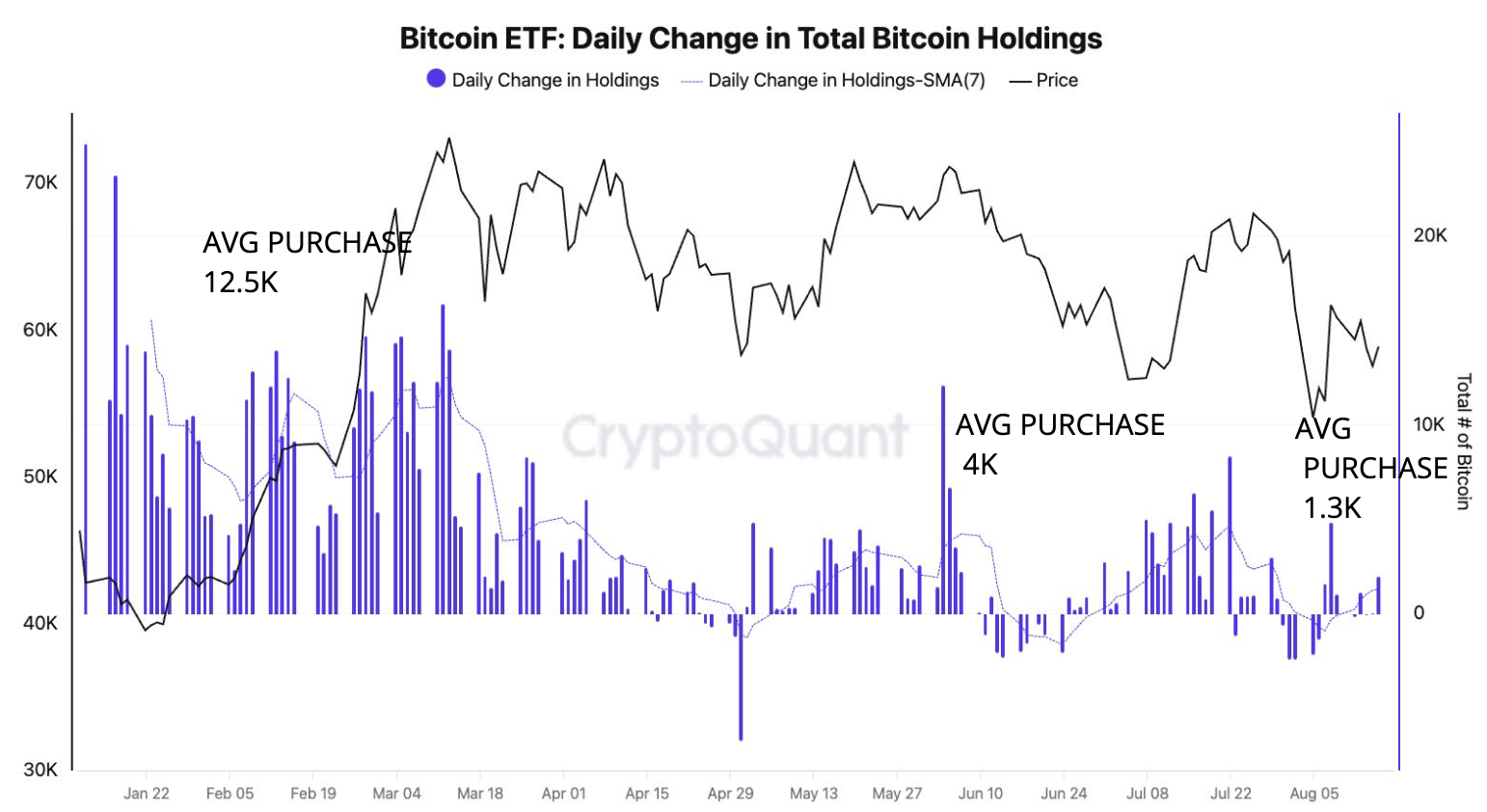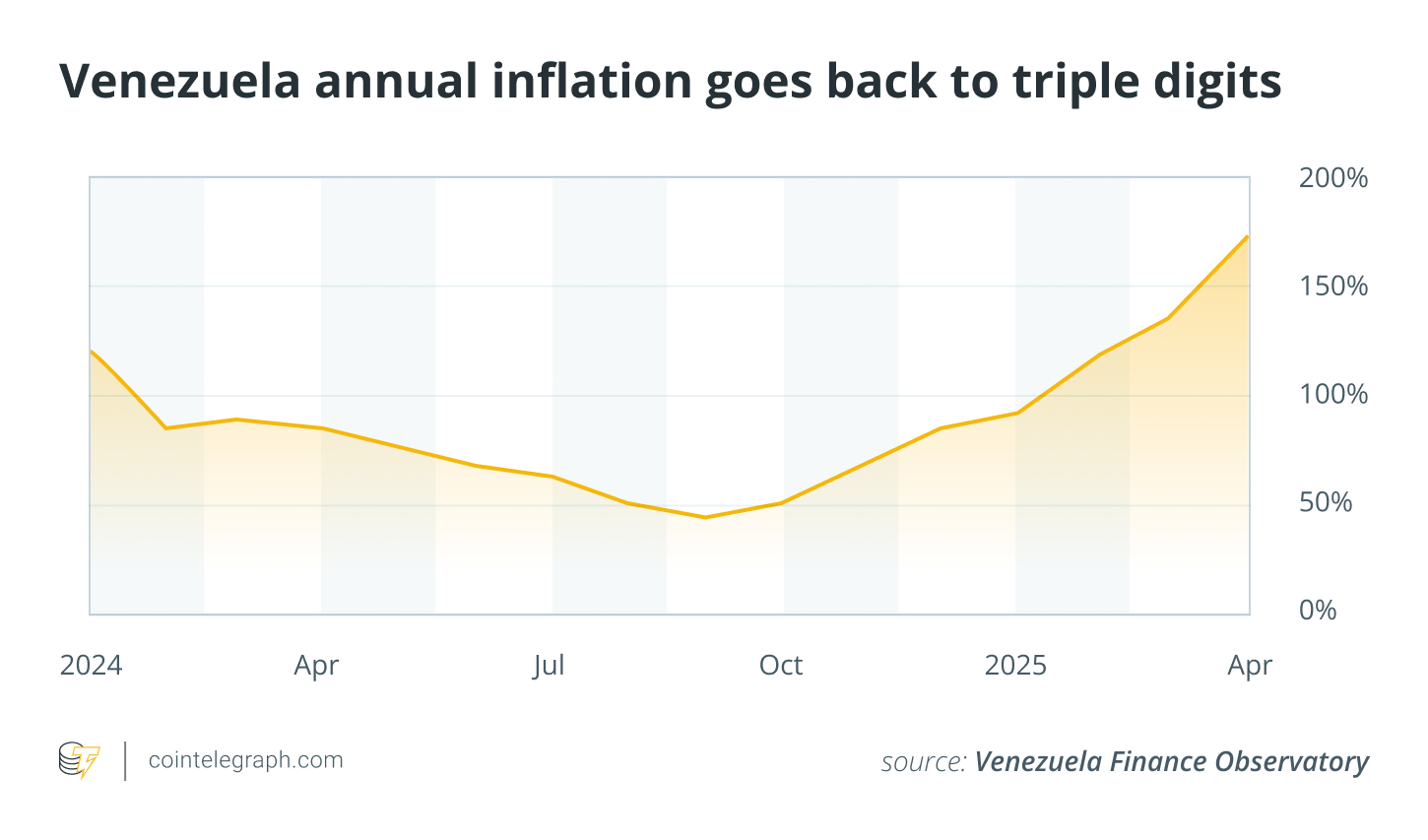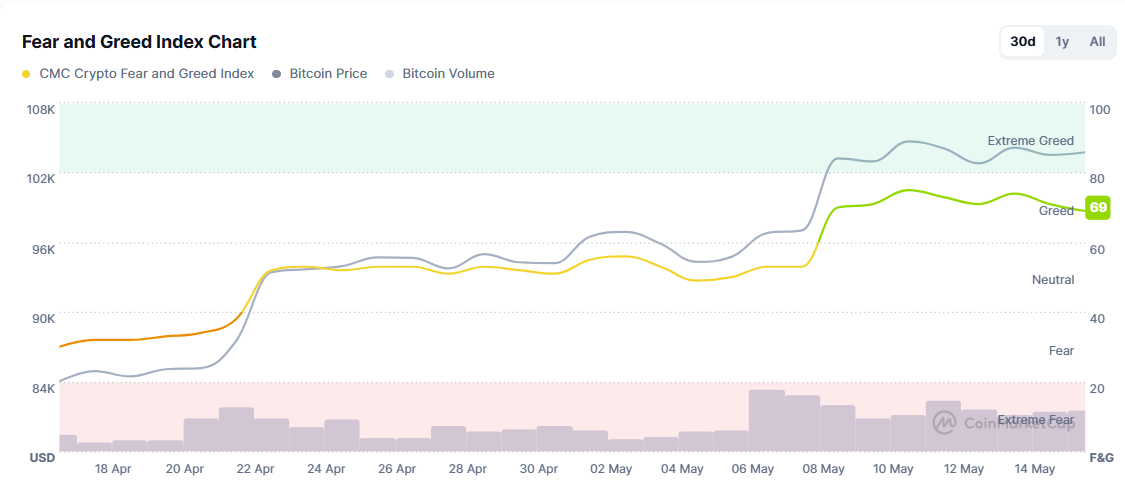Demand for Bitcoin has been in a downtrend since April, approaching negative levels over the past few weeks.
According to an Aug. 20 report from data analytics firm CryptoQuant, the apparent demand for the digital asset has dropped from a 30-day growth of 496,000 Bitcoin (BTC) in April to a current negative growth of 25,000 BTC.
As per the analysis, apparent demand is determined by calculating the difference between the daily total Bitcoin block subsidy and the daily change in the number of Bitcoins that have remained steady for one year or longer.
As expected, lower demand has negatively affected the cryptocurrency’s price. Bitcoin price declined from around $70,000 in April to a low of about $51,000 in early August. Despite the correction, the cryptocurrency is still posting a 33% return year to date at the time of writing.
The slowdown in demand was apparently pushed by a decline in purchases by spot exchange-traded funds (ETFs) in the United States — from 12,000 BTC in March to an average of 1,300 BTC between Aug. 11 and Aug. 17.
Source: CryptoQuant
Related: Bitcoin mining expenses surge 168% amid capacity growth
The price premium for BTC trading on Coinbase reached 0.25% in early 2024, shortly after the launch of the ETFs. Since then, the premium has been declining, currently standing at 0.01% and further corroborating slower demand for BTC in the United States.
“A recovery in spot ETF purchases is essential to drive overall Bitcoin demand upward, potentially leading to a corresponding price rally,” notes the analysis.
Holders keep piling up
Despite the negative trend on the institutional side, permanent BTC holders have taken advantage of the lower prices to purchase BTC at unprecedented rates.
The total balance of permanent holders — addresses that have never spent or sold Bitcoin — is rising at a record-high monthly rate of 391,000 BTC. “Demand from permanent holders is increasing even faster than it did in Q1 2024, when the price of Bitcoin exceeded $70K,” the report states.
Meanwhile, whales — addresses with 1,000 to 10,000 coins — have reduced their total holdings. According to the analysis:
“The 30-day percentage change in whale holdings has decreased from 6% in February — the fastest pace since February 2019 — to just 1% currently.”
A monthly growth rate exceeding 3% in whale holdings is correlated with rising Bitcoin prices.
Magazine: 11 critical moments in Ethereum’s history that made it the No.2 blockchain



